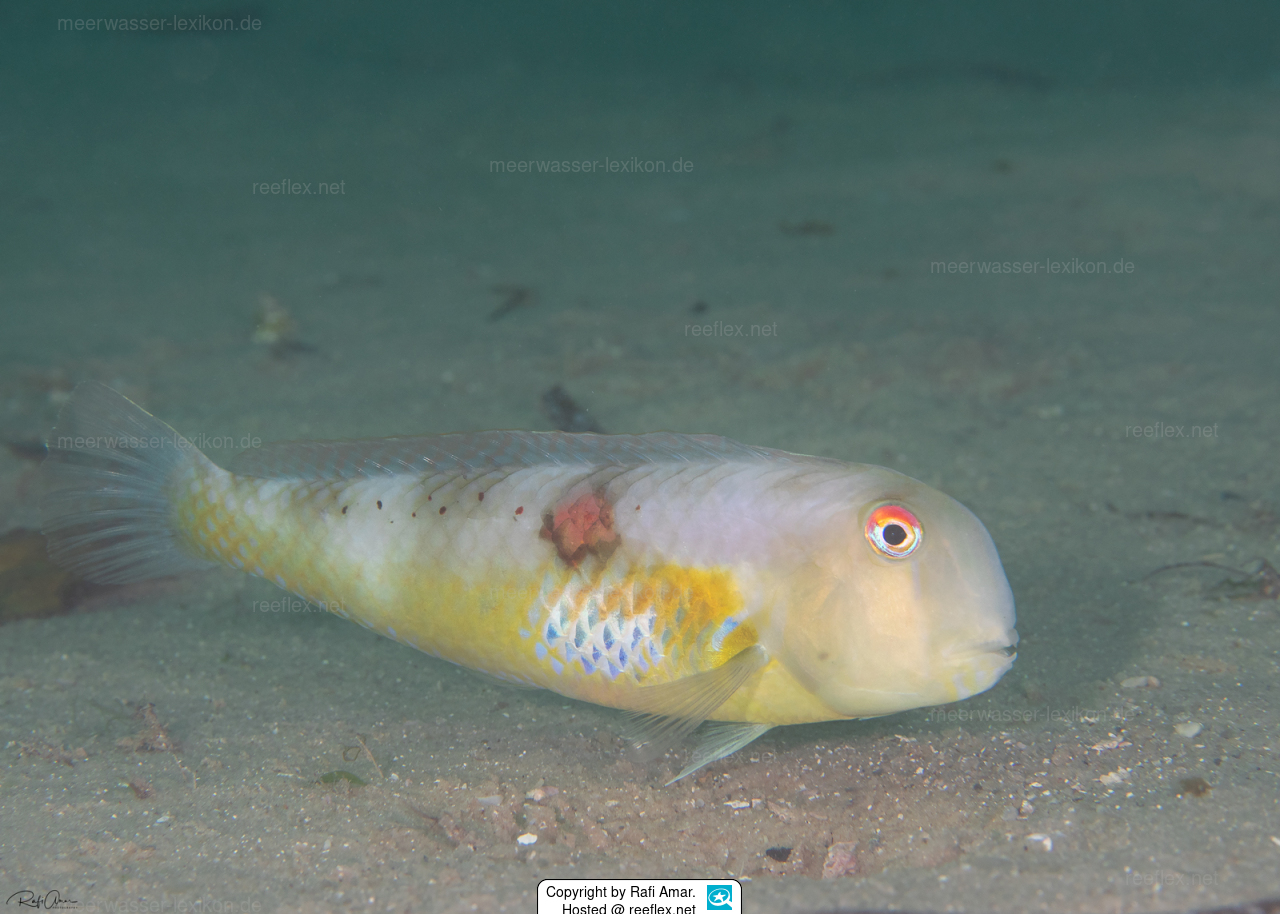Info
Iniistius naevus Allen & Erdmann, 2012
Iniistius naevus inhabits locality with extensive open sand with gradual sloping bottom at depths from 10-25 meters.
The razorfish dives into sand to sleep safely at night or to hide when alarmed.
The wrasse occurs in loose groups.
Jumping guard
A jumping guard prevents (nocturnal) fish from jumping out.
Wrasses, blennies, hawkfishs and gobies jump out of an unprotected tank in fright if their night rest is disturbed, unfortunately these jumpers are found dried up in the morning on carpets, glass edges or later behind the tank.
https://www.korallenriff.de/en/article/1925_5_Jump_Protection_Solutions_for_Fish_in_the_Aquarium__5_Net_Covers.html
A small night light also helps, as it provides the fish with a means of orientation in the dark!
Iniistius naevus inhabits locality with extensive open sand with gradual sloping bottom at depths from 10-25 meters.
The razorfish dives into sand to sleep safely at night or to hide when alarmed.
The wrasse occurs in loose groups.
Jumping guard
A jumping guard prevents (nocturnal) fish from jumping out.
Wrasses, blennies, hawkfishs and gobies jump out of an unprotected tank in fright if their night rest is disturbed, unfortunately these jumpers are found dried up in the morning on carpets, glass edges or later behind the tank.
https://www.korallenriff.de/en/article/1925_5_Jump_Protection_Solutions_for_Fish_in_the_Aquarium__5_Net_Covers.html
A small night light also helps, as it provides the fish with a means of orientation in the dark!







 Rafi Amar, Israel
Rafi Amar, Israel

























